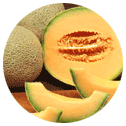Safou Fruit
Dacryodes edulis or Safou is an evergreen tree which has a short trunk with a deep and dense crown. Usually the tree flowers at the beginning of the rainy season. The pulp of the fruit contains about 48% of oil.
 Full List of Fruits
Full List of Fruits  Safou Fruit
Safou FruitSafou Fruit
Origin - Peppers are native to West and Central Africa.
Scientific Name - Dacryodes edulis
Appearance - Safou is a narrow, four-sided fruit. The outer skin is dark blue or violet in colour where the skin is shiny, thin and gentle. The flesh of the fruit will be in pale to light green color which has a strong odour of turpentine oil. It has a stony seed at the center.
The Safou fruit, also known as the African Butter Fruit or Dacryodes edulis, is a tropical fruit that is native to the tropical regions of West and Central Africa. The fruit is a member of the Burseraceae family and is closely related to frankincense and myrrh. The Safou fruit has a unique, sweet and buttery flavor, which makes it a popular ingredient in African cuisine.
The Safou fruit is a round or oval-shaped drupe, with a thin, yellow or orange-colored skin. The flesh of the Safou fruit is a pale yellow color, with a creamy texture and a sweet, buttery flavor. In some parts of Africa, the Safou fruit is known as the "butter fruit" because of its resemblance to butter. The Safou fruit has numerous health benefits, including being rich in antioxidants, vitamins, and minerals.
The Safou fruit tree is a large evergreen, with a height of up to 20 meters. The tree has a smooth, gray bark and produces small, yellow-green flowers. The tree produces two types of fruit, the ripe fruit, and the unripe fruit. The ripe fruit is a yellow or orange-colored drupe, up to four centimeters in diameter, with a thin and soft skin. The unripe fruit is a green drupe, four to six centimeters in diameter, and has a thin, hard skin.
The Safou fruit tree is grown mainly in the tropical regions of West and Central Africa, such as Nigeria, Cameroon, Equatorial Guinea, Gabon, the Republic of Congo, and the Democratic Republic of Congo. The tree is also grown in other parts of Africa, such as Angola, Zimbabwe, and Tanzania. The fruits are harvested in the summer and fall months, when they are ripe.
The Safou fruit is an important part of African cuisine. The fruit is used to make jams, jellies, and sauces, as well as being eaten fresh. The fruit is also used to make a type of porridge, which is a popular breakfast dish in many African countries. The Safou fruit can also be used to make a refreshing beverage, which is a popular drink in Africa.
The Safou fruit also has numerous health benefits. The fruit is rich in vitamins and minerals, such as Vitamin A, Vitamin C, iron, calcium, and phosphorus. The fruit is also rich in antioxidants, which can help to protect the body from free radicals, which can lead to diseases such as cancer. The Safou fruit is also high in fiber, which can help to promote a healthy digestive system.
In conclusion, the Safou fruit is an important part of African cuisine and culture. The fruit has a unique, sweet, and buttery flavor, and is rich in vitamins, minerals, and antioxidants. The fruit is also used to make a variety of dishes and drinks, as well as being eaten fresh. The Safou fruit also has numerous health benefits, making it a healthy addition to any diet.
Safou is rich in fat content and amino acids. This also comprises of micronutrients, potassium, calcium and magnesium. In addition to the content given in the table the fruit also consists of biochemicals such as acid, Iodine, Phytates and Oxalates.
| Vitamins (Per 100 g) | |
| Vitamin A | 634.4 mg - 705.4 mg |
| Vitamin C | 23.12 mg - 25.72 mg |
| Parameters ( Per 100 g) | |
| Moisture | 10.63 % - 11.99 % |
| Energy | 612.47 kcal - 648.10 kcal |
| Proteins | 13.54 g - 14.34 g |
| Carbohydrates | 8.93 g - 13.97 g |
| Ash | 2.55 g - 3.62 g |
| Dietary fibre | 8.43 g - 22.04 g |
- The leaves, stem and root barks are also used in traditional medicine to treat leprosy, dysentery, anemia and tonsillitis.
- Safou can also be used for treating skin diseases, wounds.
- The fruit has proved to control dysentry and fever.
The most popular way to enjoy safou is to make it into a jam. Safou jam is incredibly versatile and can be used as a spread on toast, a topping on pancakes, a flavor enhancer in smoothies, or even as an ingredient in a variety of desserts. Safou jam can also be used to add flavor and texture to savory dishes such as stews and curries.
Safou can also be used to make a delicious ice cream. The unique sweet and sour taste of safou makes it an ideal choice for making a unique and delicious ice cream. Safou ice cream can be enjoyed by itself, or it can be used as a topping for other desserts.
Safou can also be used to create a unique and delicious sauce. The unique flavor of safou makes it an ideal choice for a variety of sauces. Safou sauce can be used as a dip for chips or vegetables, as a topping for grilled meats, or as an ingredient in various dishes.
Safou can be used to make a unique and delicious candy. The unique sweet and sour taste of safou makes it an ideal choice for making a variety of candies. Safou candies can be used as a snack, a topping for desserts, or an ingredient in other dishes.
Safou can also be used to make a unique and delicious syrup. The unique sweet and sour taste of safou makes it an ideal choice for making a syrup that can be used to sweeten a variety of dishes. Safou syrup can also be used as a topping for ice cream, pancakes, waffles, or other desserts.
Safou is an incredibly versatile fruit that can be used in a variety of ways to make a unique and delicious dish. Its unique sweet and sour taste and its rich nutritional value make it an ideal choice for a variety of culinary uses. Whether you enjoy it raw, cooked, or dried, safou is sure to make any dish a delicious one.
Safou is an evergreen tree which grows up to a height of 8cm-15cm in height. The pulp of the fruit contains about 48% of edible oil, which is rich in amino acids. Though safou is very creamy and delicious like butter, this is also called as Butter fruit.
Its wood is very hard and elastic in nature, which is highly used in making tool handles. Resin produced from the bark of the tree is highly beneficial in making glue. The leaves and roots are used in preparing various traditional medicines.
How to eat? On by roasting or quickly boiling Safou in salt water, the pulp gets separated from the skin and seed.












 Introduction of Safou Fruit
Introduction of Safou Fruit 



